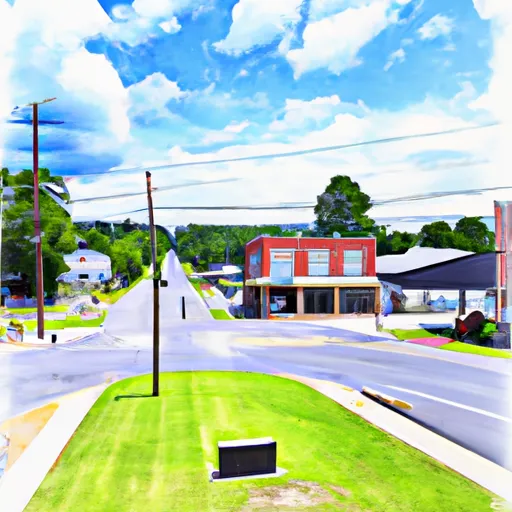-
 Snoflo Premium
Snoflo Premium
Get unlimited access to all our content
With no Ad interruptions! - Start Your Free Trial Login with existing account
Burns
Eden Index
Climate
7.7
•
Recreation
2.5
•
Community
2.9
•
Safeguard
4.7/10

Burns, Tennessee is located in the northern part of the state and has a humid subtropical climate. Summers are hot and humid, with temperatures reaching into the 90s, while winters are mild with occasional snowfall. The Harpeth River runs through the town, providing opportunities for fishing, kayaking, and canoeing. The river also serves as a source of drinking water for the town, along with groundwater and surface water from nearby sources. Burns boasts several parks and recreational areas, such as Montgomery Bell State Park and the Burns Park Complex, where visitors can enjoy hiking, camping, and various sports activities. Overall, Burns offers a mix of outdoor recreational opportunities and a mild climate, making it an attractive destination for nature lovers.
What is the Eden Index?
The Snoflo Eden Index serves as a comprehensive rating system for regions, evaluating their desirability through a holistic assessment of climate health, outdoor recreation opportunities, and natural disaster risk, acknowledging the profound impact of these factors on livability and well-being.
Climate Health Indicator (CHI): 7.7
Burns receives approximately
1351mm of rain per year,
with humidity levels near 84%
and air temperatures averaging around
15°C.
Burns has a plant hardyness factor of
7, meaning
plants and agriculture in this region tend to thrive during the non-winter months.
By considering the ideal temperature range, reliable water supplies, clean air, and stable seasonal rain or snowpacks, the Climate Health Indicator (CHI) underscores the significance of a healthy climate as the foundation for quality living.
A healthy climate is paramount for ensuring a high quality of life and livability in a region, fostering both physical well-being and environmental harmony. This can be characterized by ideal temperatures, reliable access to water supplies, clean air, and consistent seasonal rain or snowpacks.
Weather Forecast
Streamflow Conditions
Lower Cumberland
Area Rivers
Lower Cumberland
Snowpack Depths
Lower Cumberland
Reservoir Storage Capacity
Lower Cumberland
Groundwater Levels
Recreational Opportunity Index (ROI): 2.5
The Recreational Opportunity Index (ROI) recognizes the value of outdoor recreational options, such as parks, hiking trails, camping sites, and fishing spots, while acknowledging that climate plays a pivotal role in ensuring the comfort and consistency of these experiences.
Access to outdoor recreational opportunities, encompassing activities such as parks, hiking, camping, and fishing, is crucial for overall well-being, and the climate plays a pivotal role in enabling and enhancing these experiences, ensuring that individuals can engage in nature-based activities comfortably and consistently.
Camping Areas
| Campground | Campsites | Reservations | Toilets | Showers | Elevation |
|---|---|---|---|---|---|
| East Bank/Millers Ferry | None | 89 ft | |||
| Holt Lake | None | 187 ft | |||
| Payne Lake East Side | None | 362 ft | |||
| Bells Landing | 14 | 69 ft | |||
| Roland Cooper State Park | 60 | 85 ft | |||
| Payne Lake West Side | None | 282 ft | |||
| Haines Island | 12 | 55 ft | |||
| Elm Bluff - William Dannelly Reservoir | None | 103 ft | |||
| Payne Lake Spillway | None | 267 ft | |||
| Chilatchee Creek | 33 | 107 ft |
Nearby Ski Areas
Catastrophe Safeguard Index (CSI):
The Catastrophe Safeguard Index (CSI) recognizes that natural disaster risk, encompassing floods, fires, hurricanes, and tornadoes, can drastically affect safety and the overall appeal of an area.
The level of natural disaster risk in a region significantly affects safety and the overall livability, with climate change amplifying these risks by potentially increasing the frequency and intensity of events like floods, fires, hurricanes, and tornadoes, thereby posing substantial challenges to community resilience and well-being.
Community Resilience Indicator (CRI): 2.9
The Community Resilience Indicator (CRI) recognizes that education, healthcare, and socioeconomics are crucial to the well-being of a region. The CRI acknowledges the profound impact of these elements on residents' overall quality of life. By evaluating educational resources, healthcare accessibility, and economic inclusivity, the index captures the essential aspects that contribute to a thriving community, fostering resident satisfaction, equity, and social cohesion.

